Meet Ali
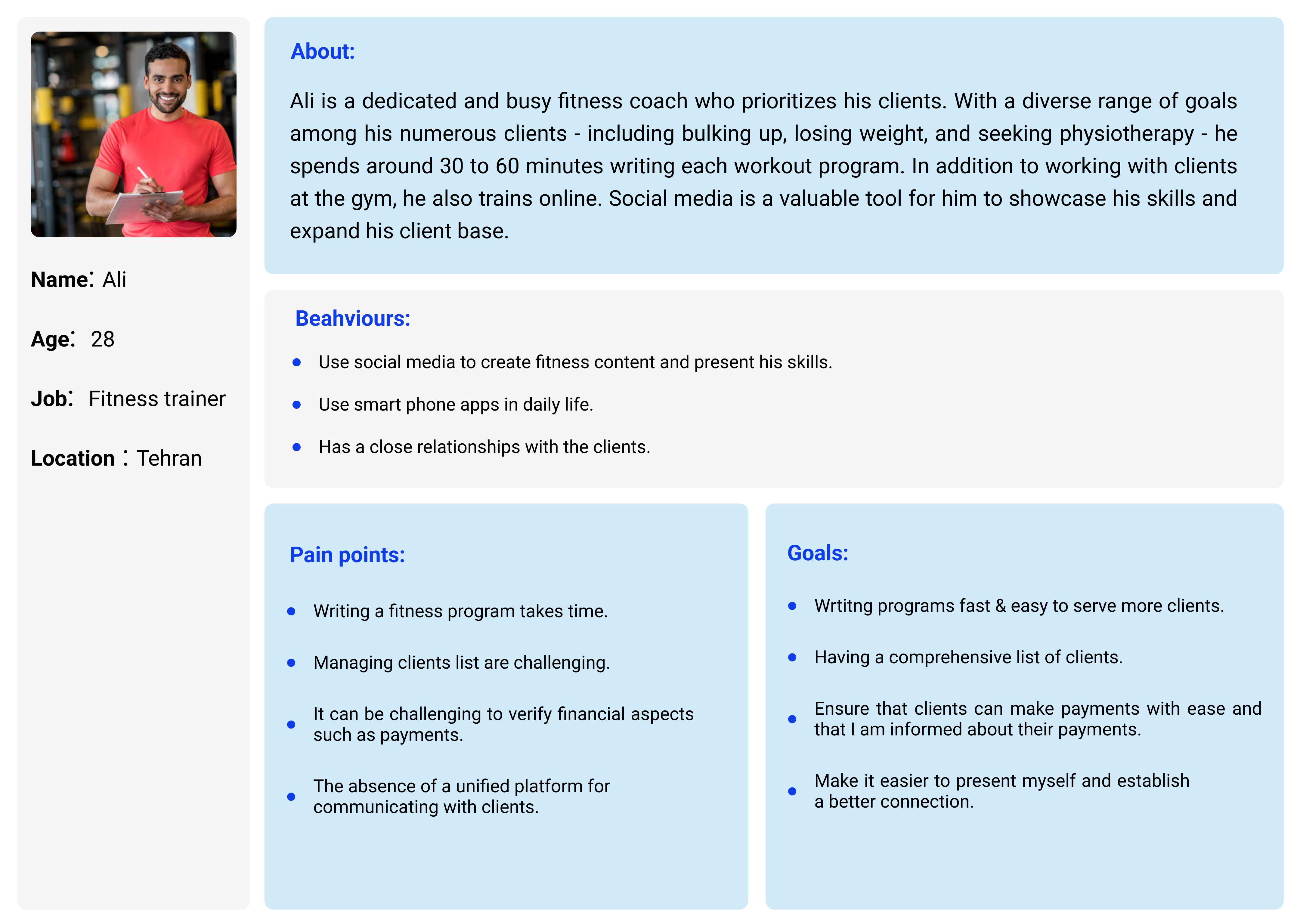
Today there is over 60,000 fitness trainers who works actively in the fitness centres in Iran and around 20,000 gym salon. Statistics show that 300,000 active trainees and 800,000 trainees with sport insurance are at the gyms in 2022. But there is lack of a good platform for connecting trainers and trainees, why we say that? Our findings indicate that fewer than 5% of trainers utilize a mobile app for coaching. Nearly half of them opt for pen and paper, while the other half prefer using Office software. In fact most of the trainers think current apps in the market do not worth to pay. This need was also highlighted by coming Covid-19 pandemic that face to face meetings were reduced. Dastan is a project that is going to develop a platform to help trainers to stay in touch with their clients with ease.
“At the MVP version our focus is more on the trainers pain points, because it is the trainers that bring the clients to the app, based on our business model.”

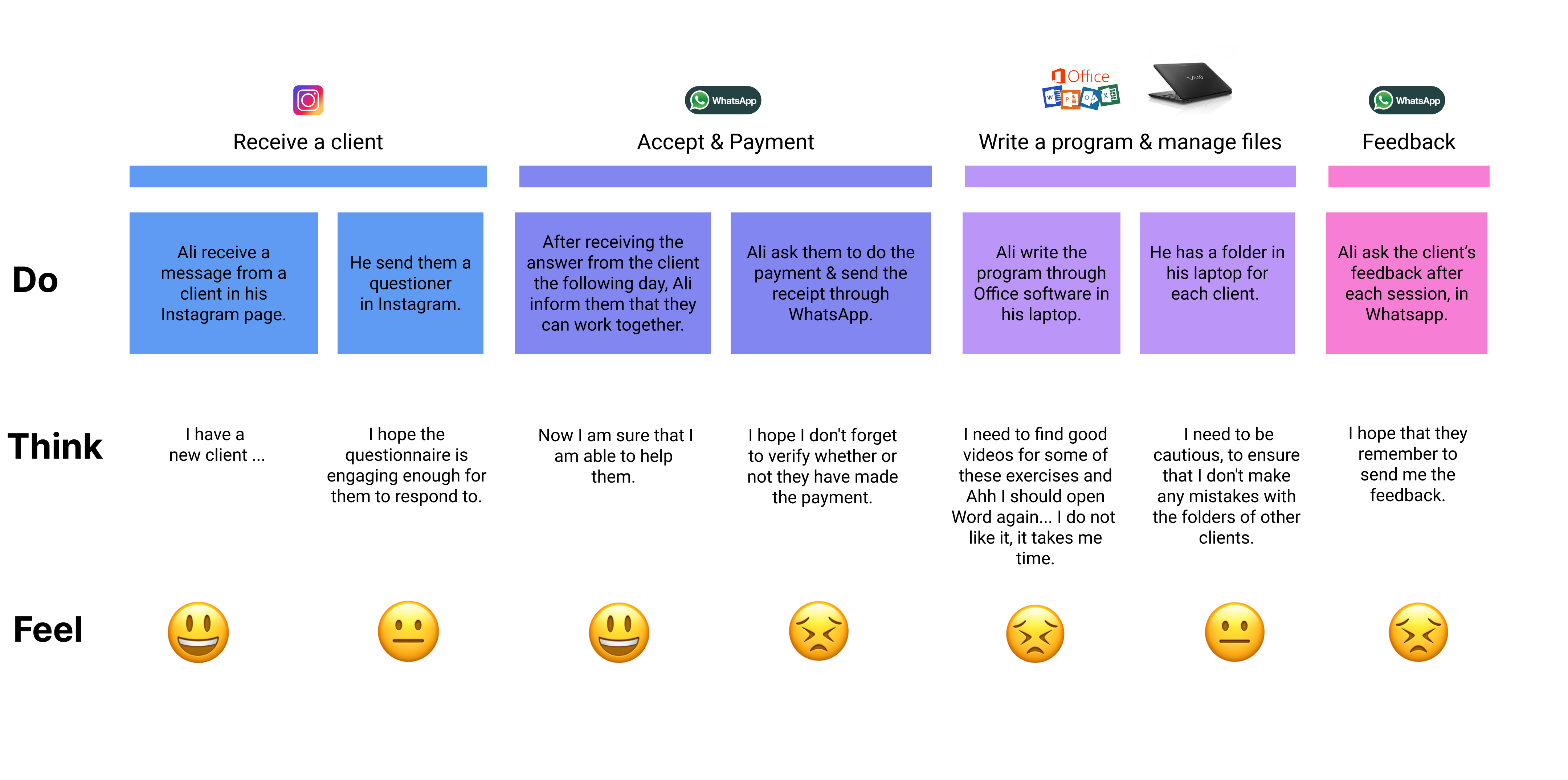
But, how did we get here?
Writing, managing and sending workout programs is time consuming, repetitive and tiring for trainers.
I conducted 10 interviews with 20–35 years old trainers to know more about users’ experiences, feelings and pain points and also their feedback about our direct competitors. Here is the summary:
Here is the summary:

To validate our hypothesis and obtain insights from users, I carried out a user survey. After drafting the questions, I presented them to the CEO, who suggested revisions, including the removal of some and addition of new ones. The final version was then posted on several online communities with a user base similar to our target audience.
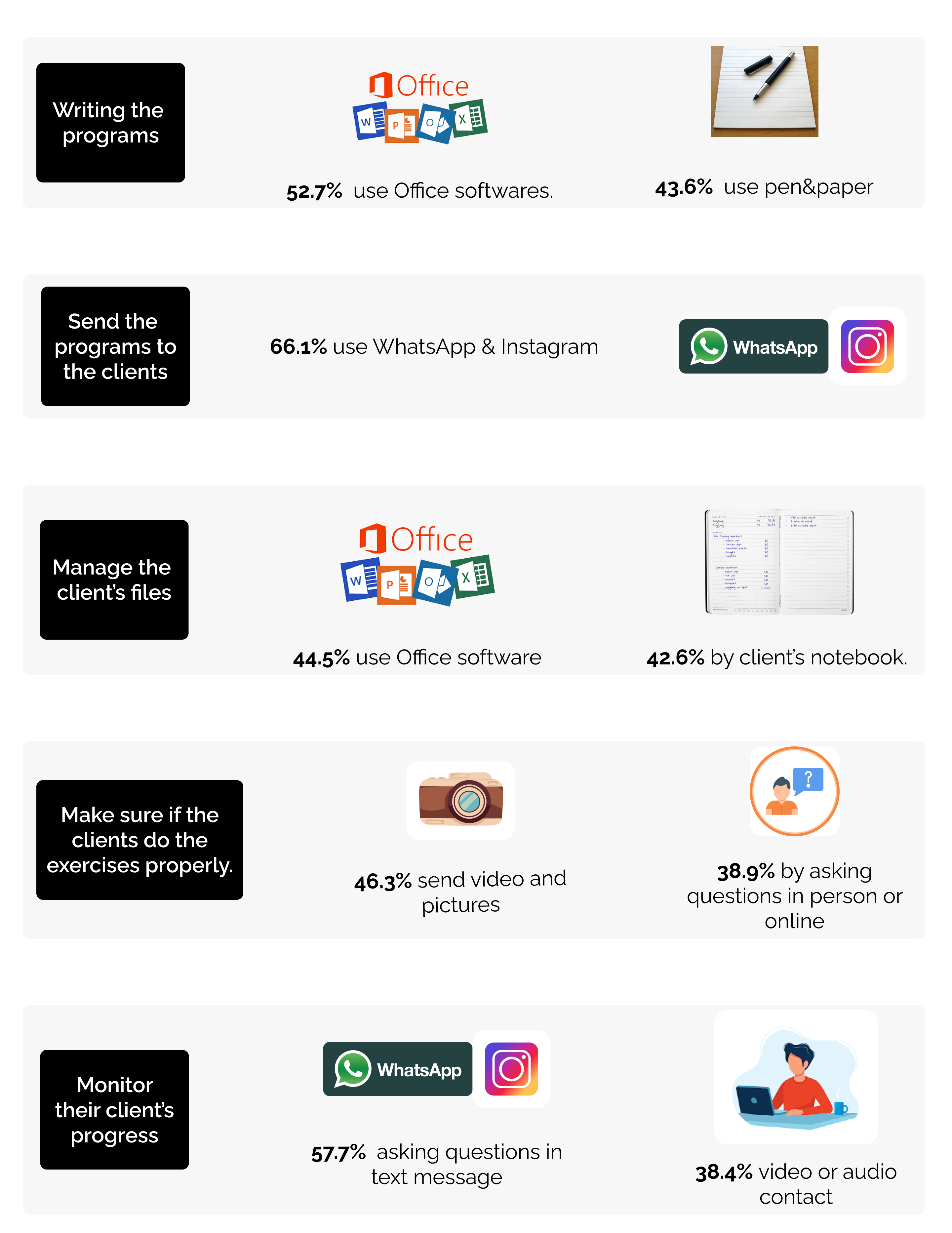

In Iran, there is approximately around 20,000 gym salon, and 60,000 fitness trainers who works actively in the gyms. There is 300,000 active trainees at the gyms and 800,000 trainees with sport insurance, that shows a great potential this market has.
I researched about the existing players in the market. There is three direct competitors and some indirect players. I installed them to see how they answer to the current problems. Each one has some nice features to save time, but they did not bring the best solution for their users’ need yet. I have created a product benchmarking to measure our MVP against other competitors in the market.
(Due to the special focus of features on trainers, this map was created from the perspective of trainers.)

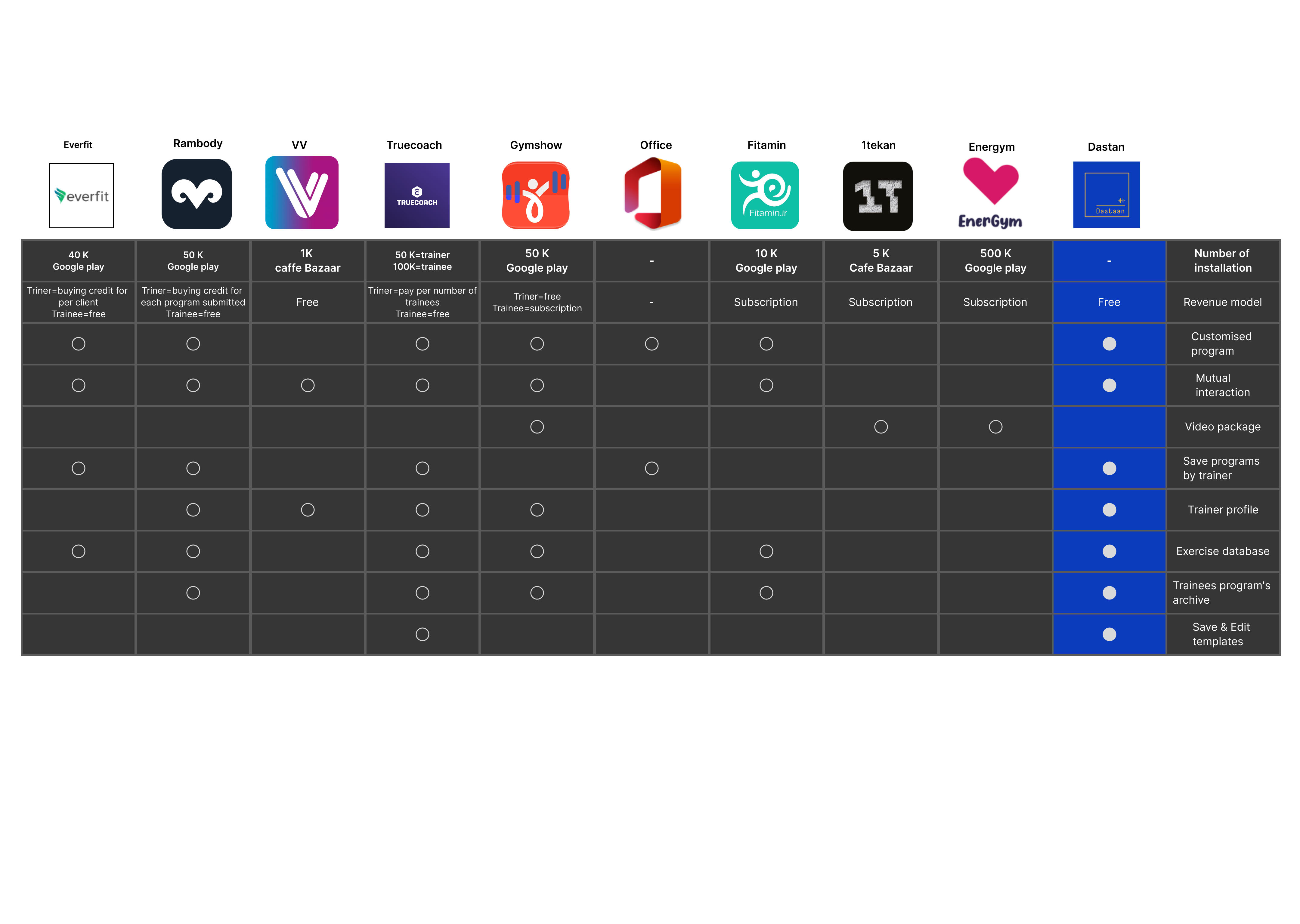

Then we chose the top most burning problems that we have observed during the research and turned them to user stories to express the values our product can bring.
I focused on the four main problems resulted from my research. I had an ideation session with the CEO and we shared our ideas together then came up with the solutions at the end.
I created a VPC to map the key things that make up our product and why people should buy it.
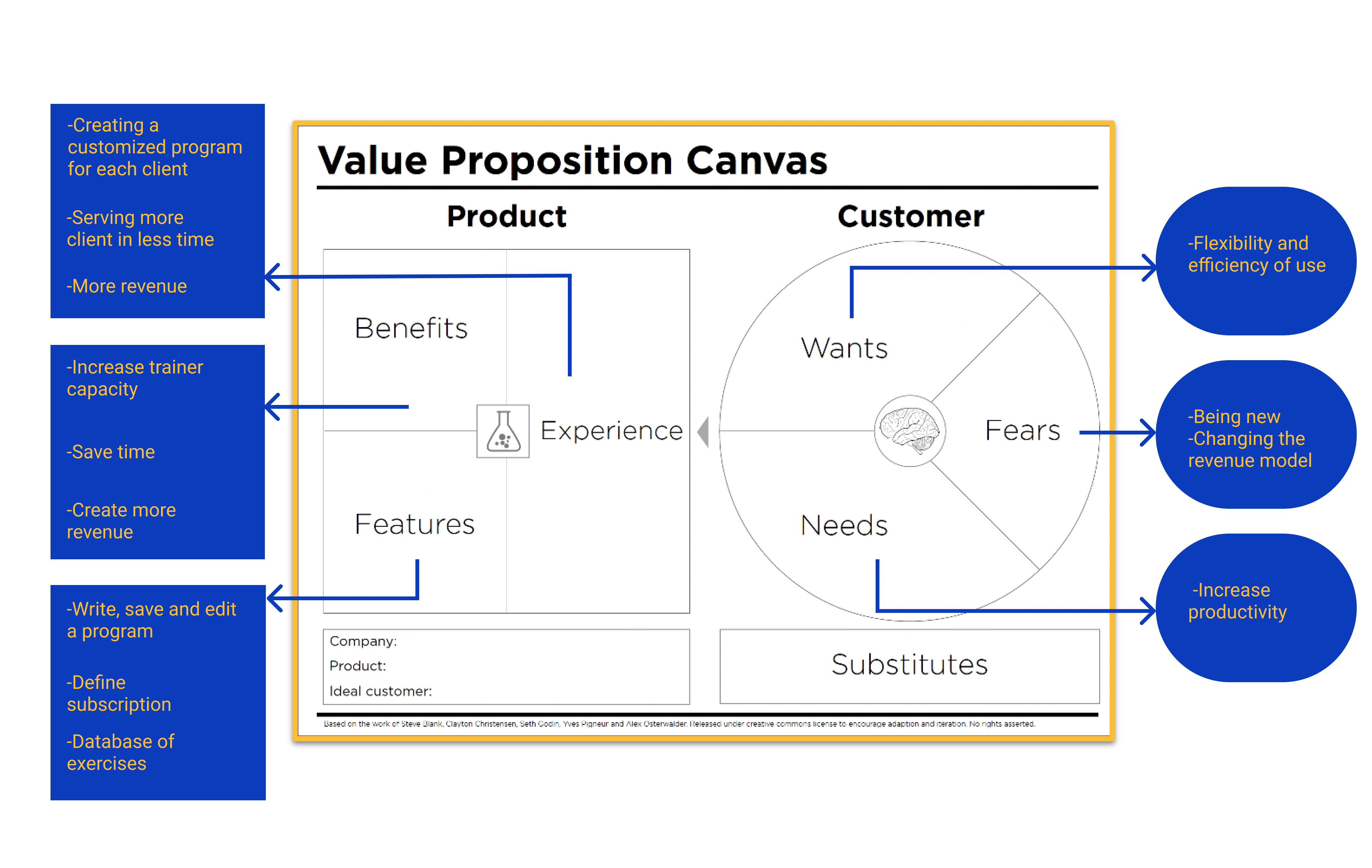
Since developing all the features for the MVP is going to be complex and also out of the budget, so we decided to choose the principle features among them for developing. I used MoSCoW approach to conduct a workshop with the CEO, two users and I, to classify the features in Must have and Should have.
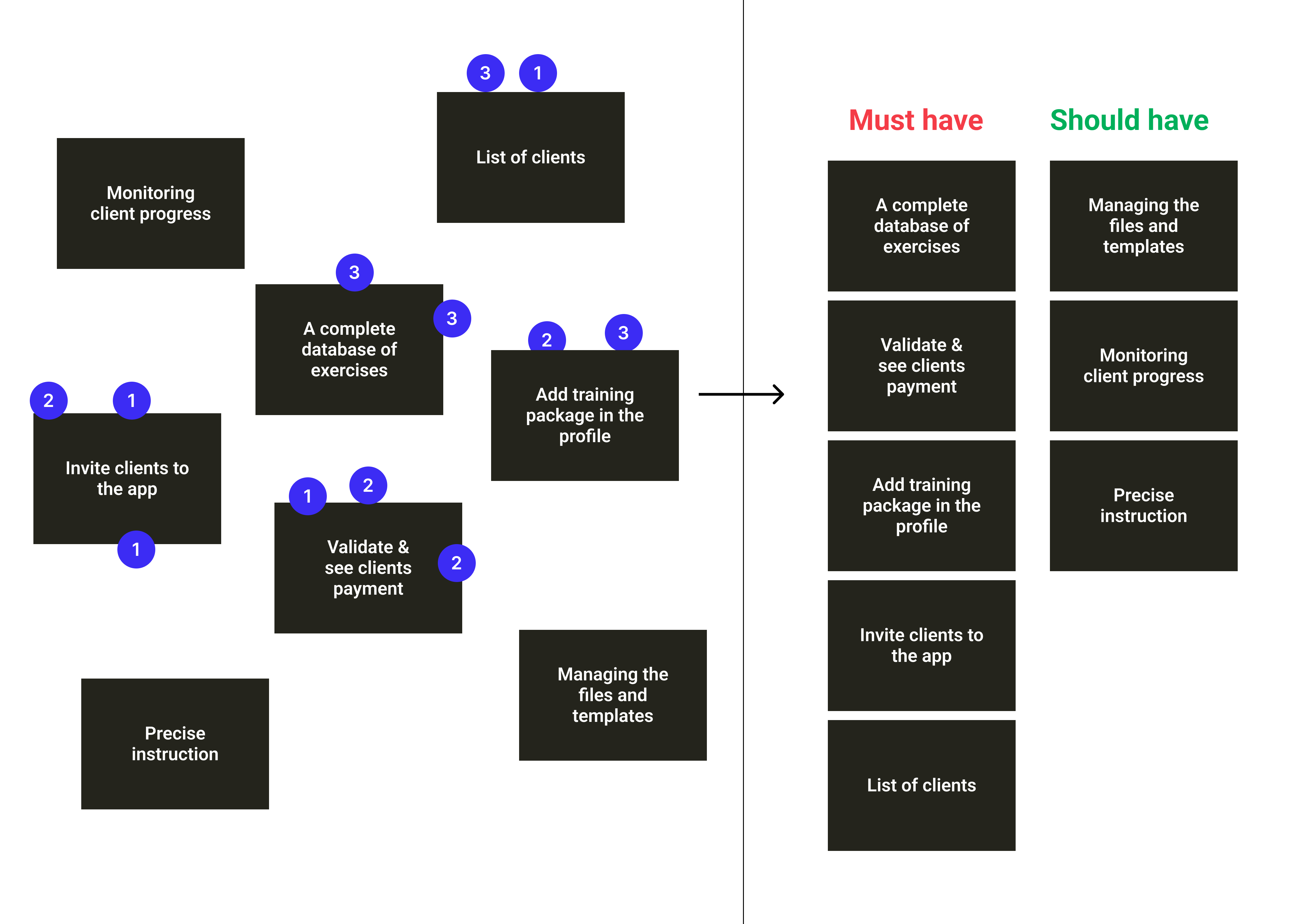

With all the information and those ideas that came from Low-fi design (I always like to start the design process with pen and paper. It gives me confidence and also allow me to bring my ideas on the paper very fast.), I designed a Mid-fi wireframes that helped me to shape the final product quickly. Below I explain the four main features in short.
Users can find all their clients in three categories including: Active clients, Awaiting clients and Archive clients. They can click on trainees name and be aware about their situation immediately.
Users can select the exercises either from the predefined database or from those exercises that are created by themselves. Each exercise has an instruction page that include videos, anatomy, voice, text and number of repetition.
On Workout plan page, user can have a big picture of all the sessions and all the exercises that are nested in each session. They can also arrange the exercises and sort them out as they like. They are also able to make a superset directly from there.
Trainers are able to create, edit and save the workout plans in templates. This feature allow users to archive a workout plan that is written for a client, then will be used for other client with similar needs in the future. This makes them able to give a faster service to their clients.
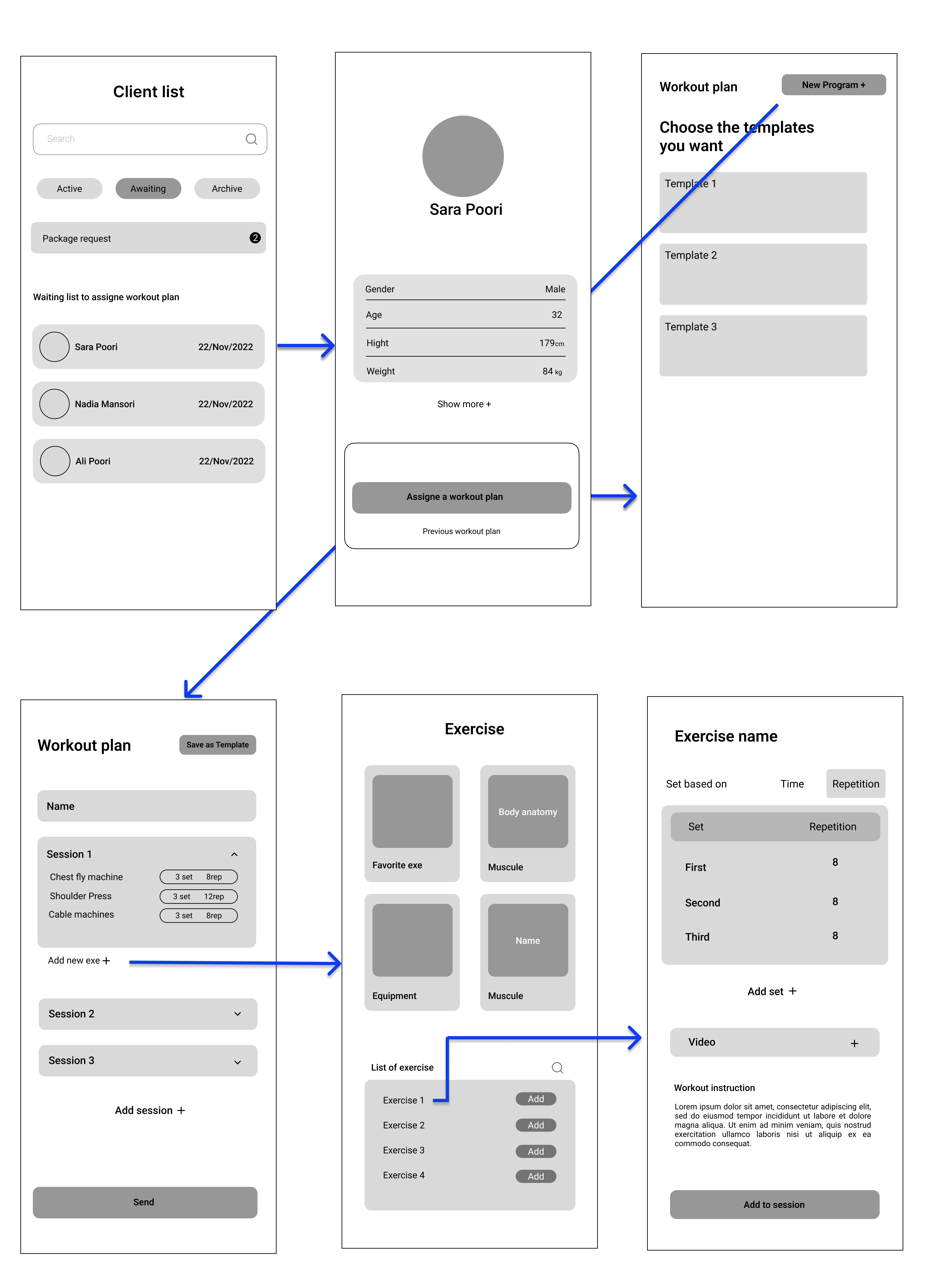
I conducted a usability testing with 6 trainers that helped me to collect some useful feedbacks. I have found the two big parts that need to be changed and some small changes in the details. Below, you see the two principal changes.
Users can select the exercises from the predefined database or those exercises that are created by themselves, and also can apply a filter for having a precise result. Each exercise has an instruction page that include videos, images, voice and text.
First change: I found that users prefer to see all the details of a workout plan in one page rather than finding the details of each exercise in the separate pages. Besides that, long scrolling to see all the exercise of each session in the first version was exhausting for users and does not give them a proper overview of the workout plan. So I decided to show all the workout plan at one page. The new design give users more control on the program and increase the speed of writing the program.
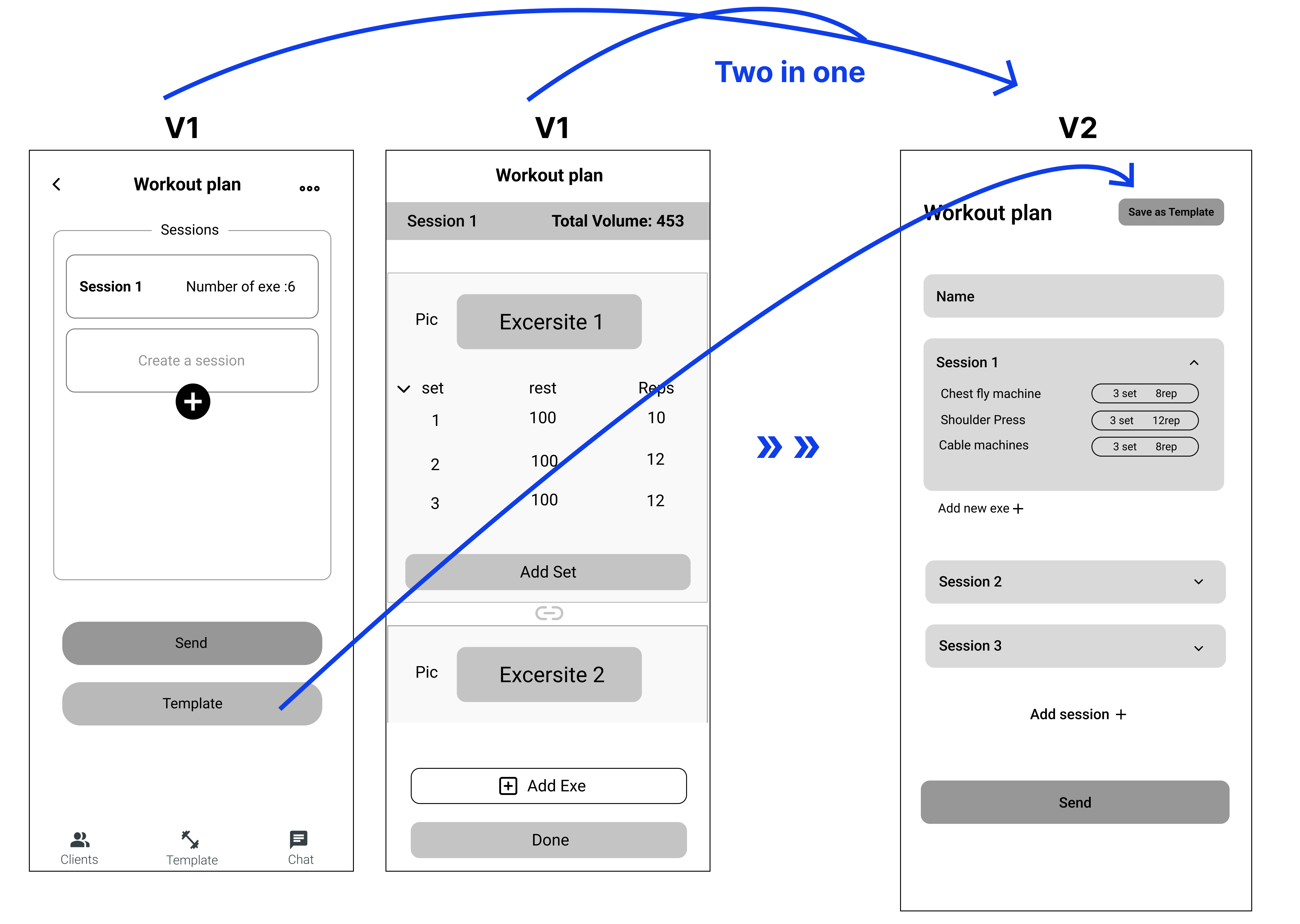
Second change: Trainers need to customize the number of repetition for each exercise. So considering this section as a part of the structure of an exercise make more sense for users and is less confusing and increase consistency.
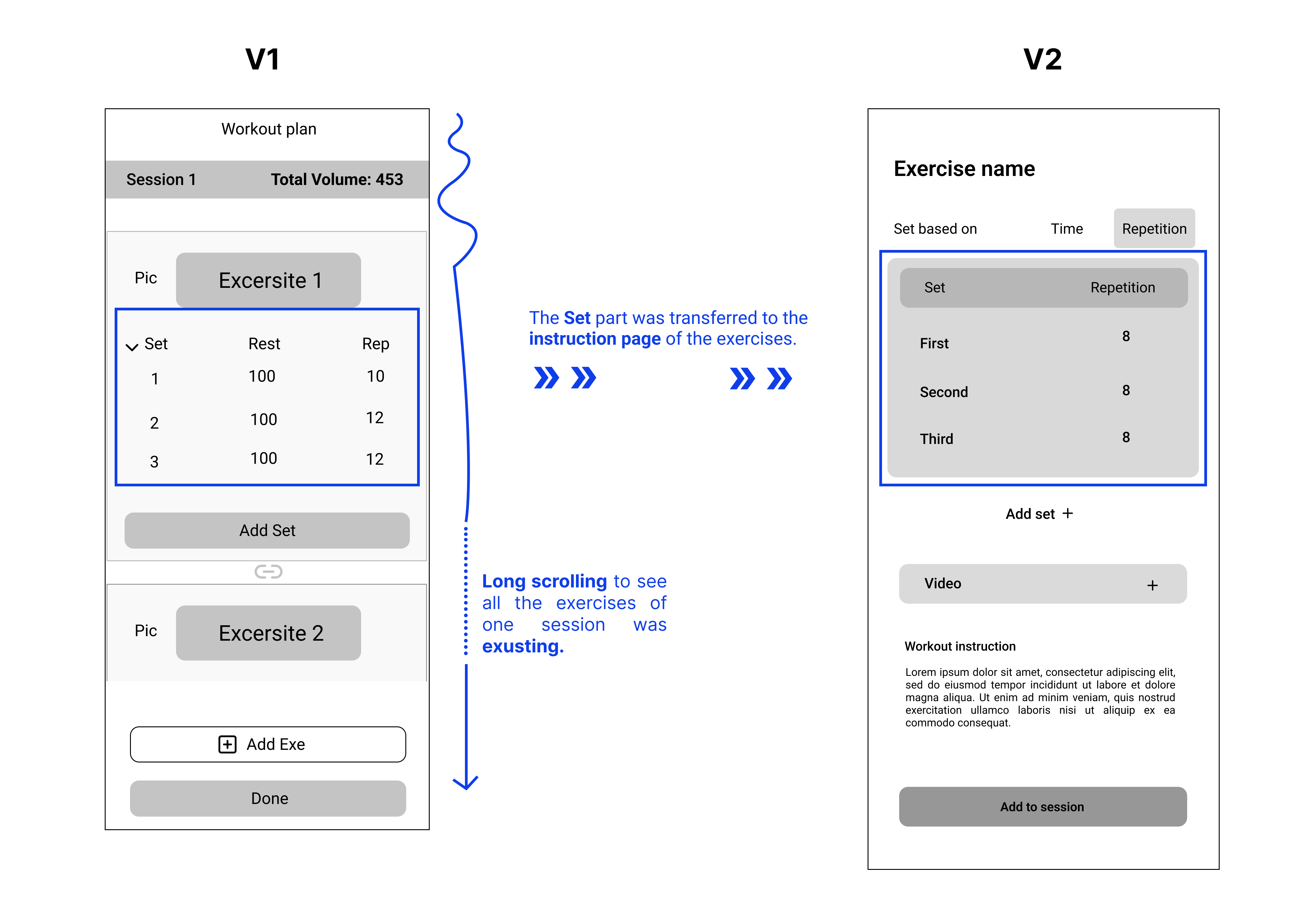
I created a mood board with the goal of empowering trainers and trainees and reassuring them that they can have a trustful relationship trough this platform.
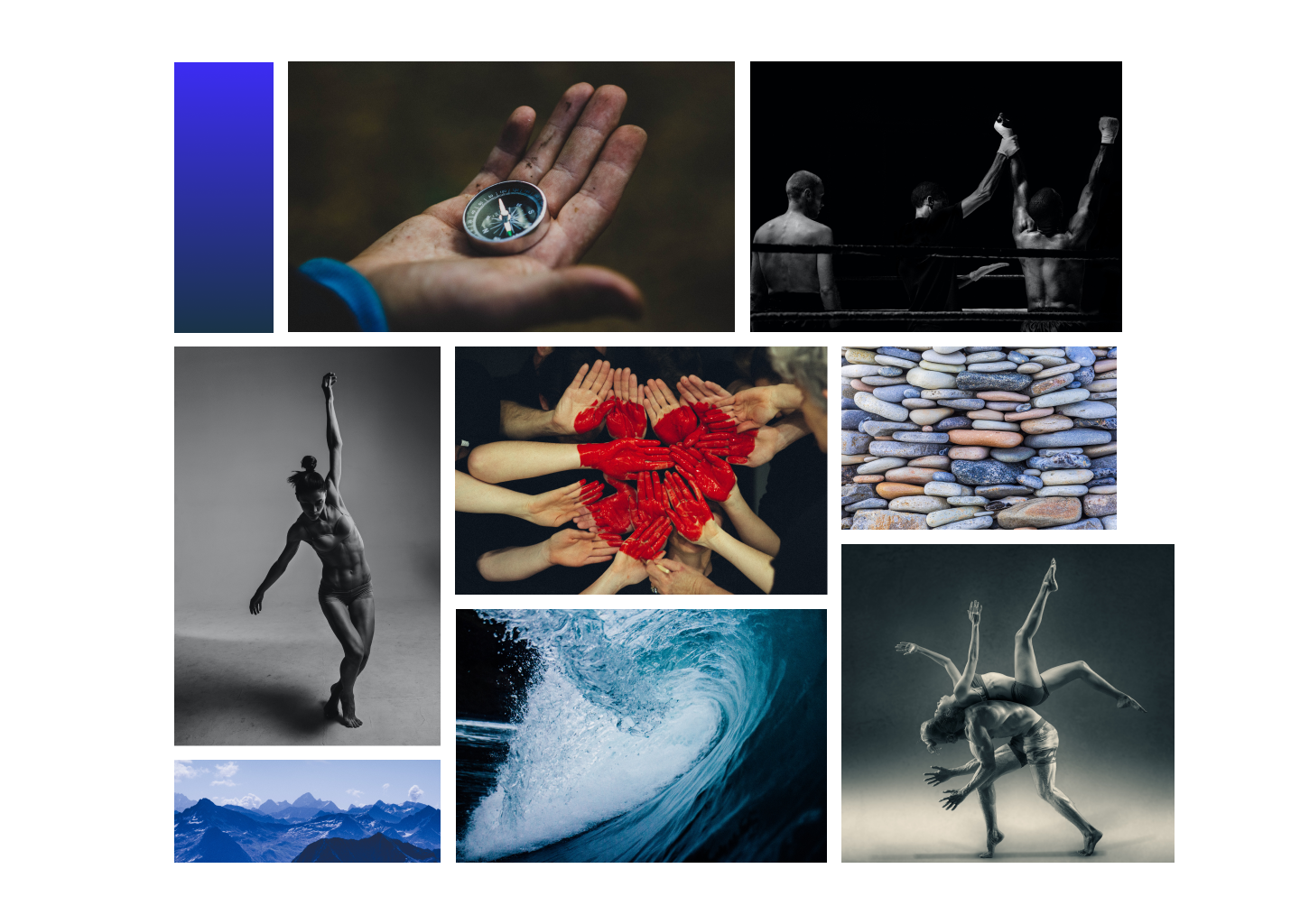
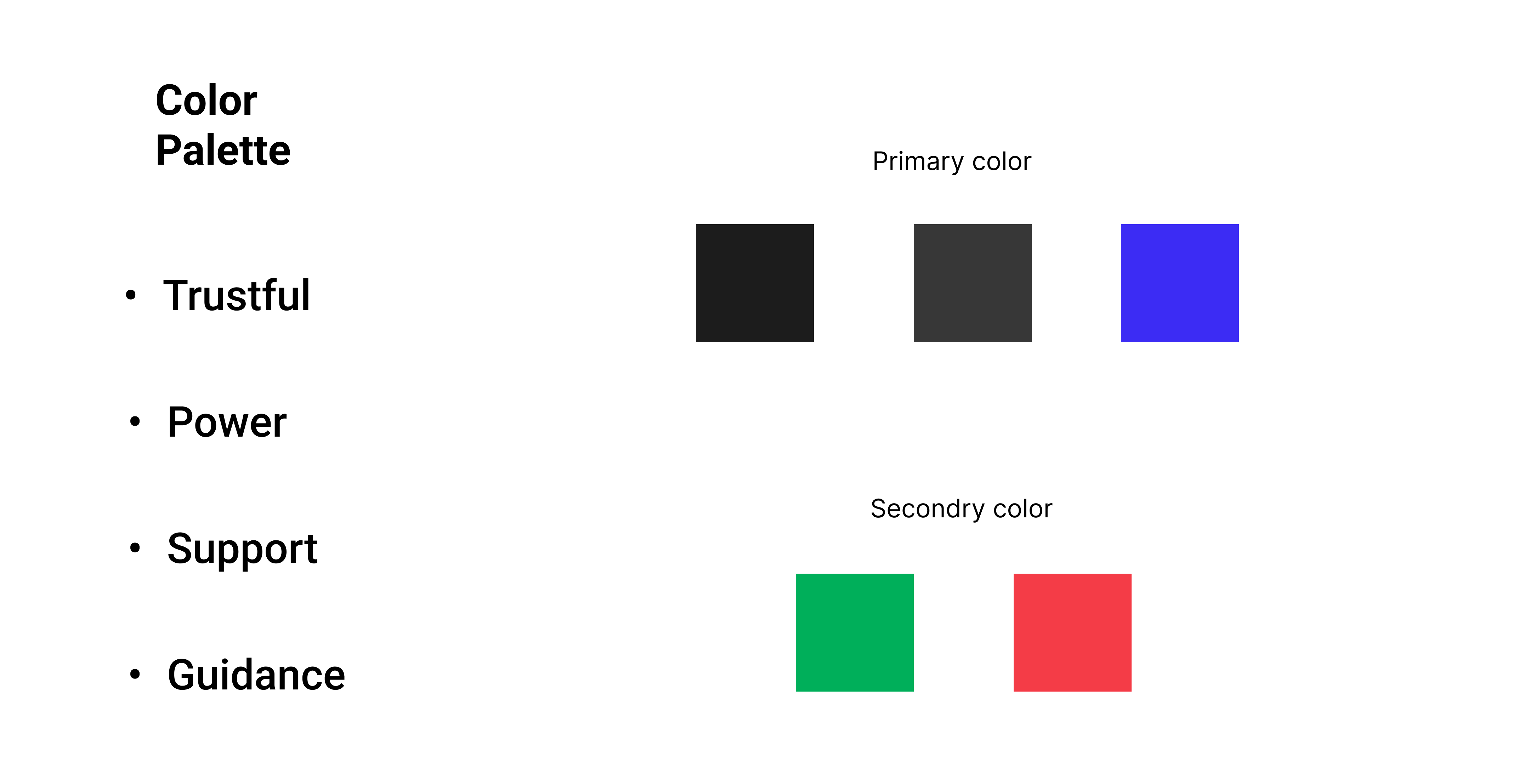
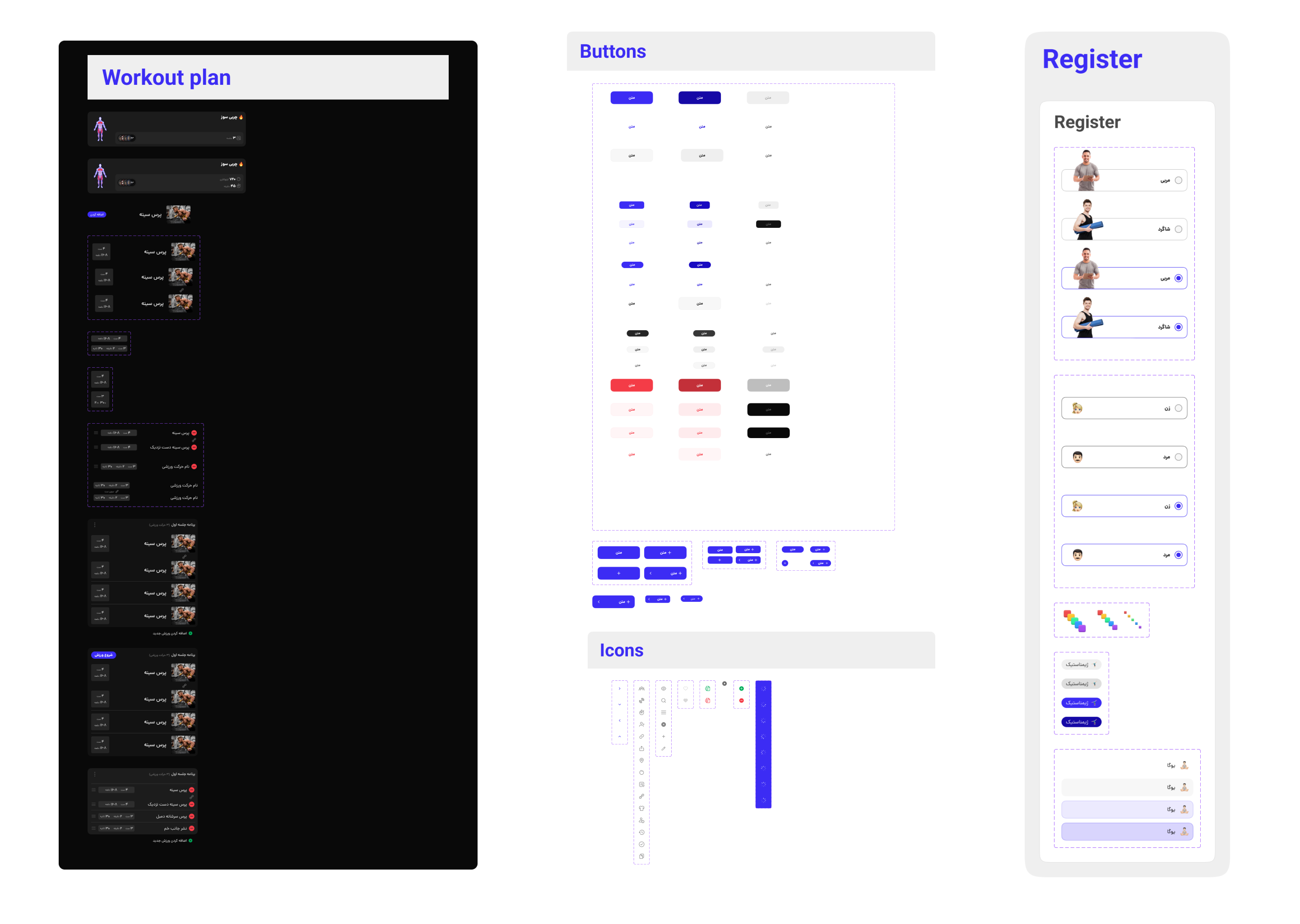
In Hi-fi prototyping I divided the app into different modules for controlling the complexity of the app trough modular design. I also changed the language from English to Persian because of the feed back that we collected from the market, but I am working on the English version as well, I will add it here very soon.
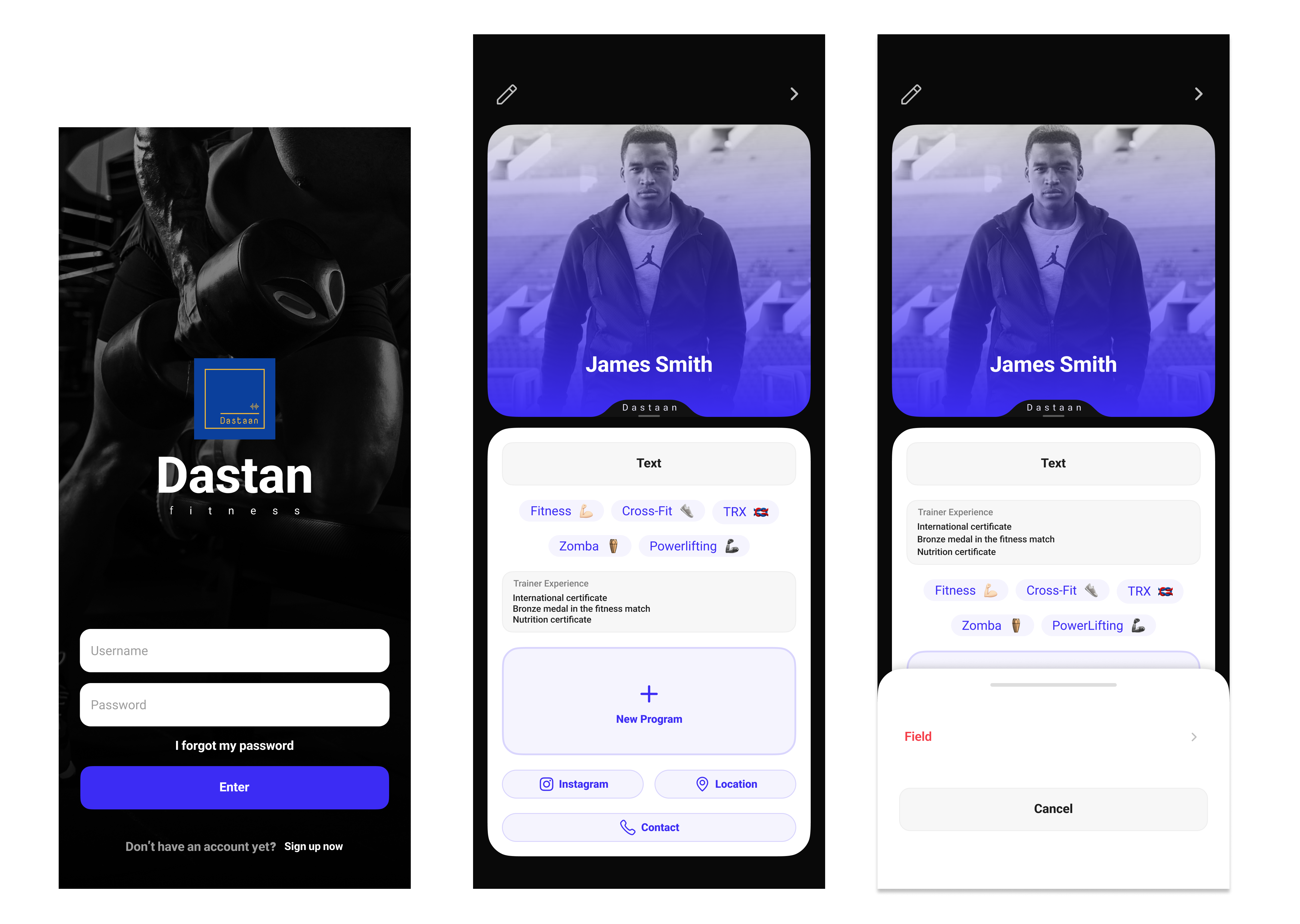
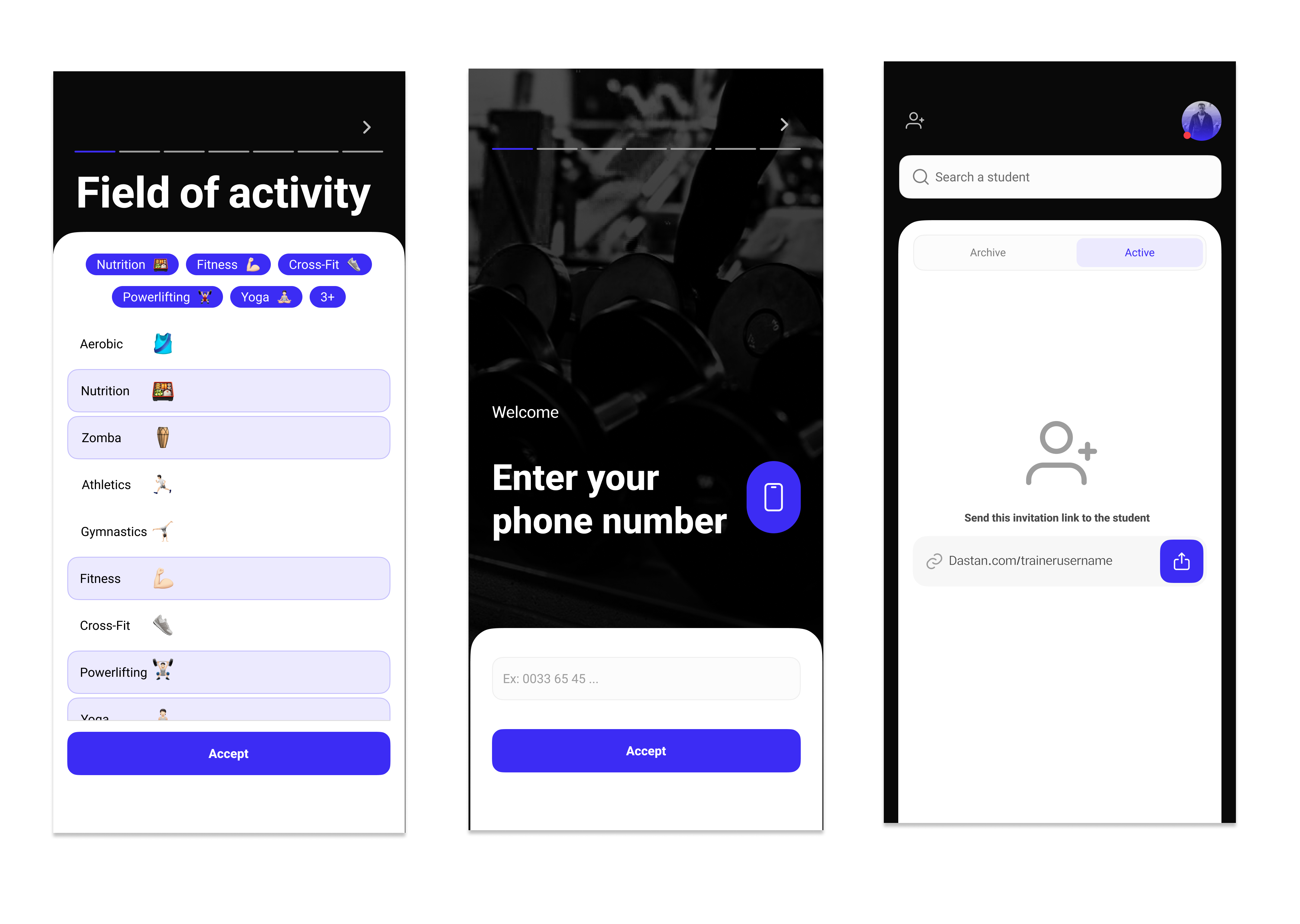
I designed Mid-fi wireframes for both parts (Trainers and Trainees) but since our focus is on MVP of trainers for the first step, because of our customer acquisition strategy so I completed the Hi-fi prototype of the trainers and as a second step I am working on the trainee’s Hi-fi prototype and I will add it to the case study very soon.
This project boosted my design thinking skills and beside that it improvs my visual skills and enabled me to handle successfully unexpected changes that I faced during the design process. I also want to thank my mentor Hooman Ahmadi in UI part, for his support, advice and patience.
Thanks for reading! If you want to collaborate, talk about product design, or just want to say hello, hit me up at sahar.r.mohammadi@gmail.com or connect via LinkedIn.